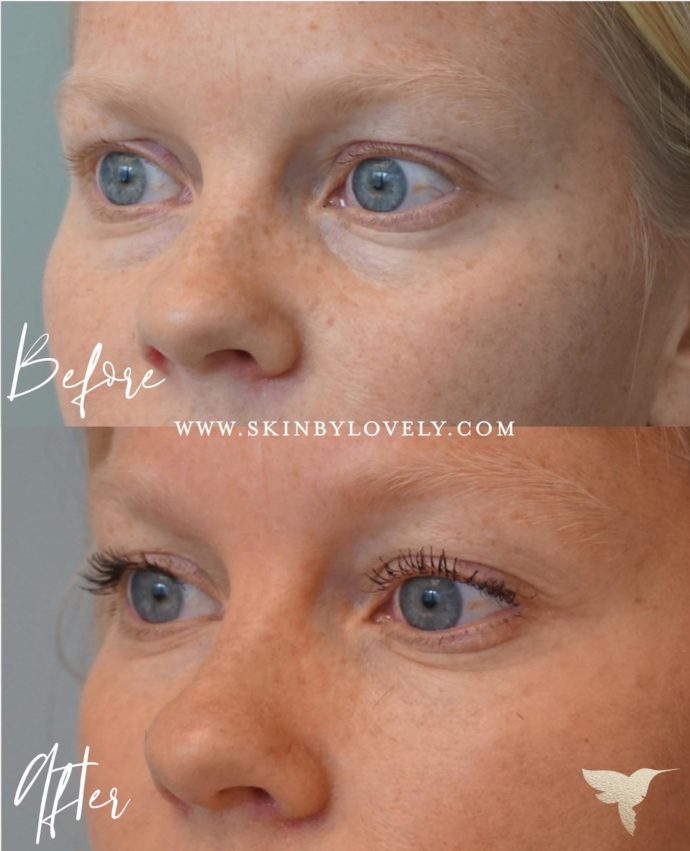Camas, WA
Injectables
Skin Rejuvenation
Hair Restoration & Growth
Shop By Category
With the holidays fast approaching, increased shopping, frequent parties and loss of sleep can cause you to look tired, less refreshed and older due to the dreaded dark under eye circles! Rest assured, there are solutions and even preventive tips to get rid of raccoon eyes.
There are so many reasons for dark under eye circles; some of these you can control while others are ingrained into your DNA.
Pigmentation in this delicate area is likely to worsen with age and sun exposure, as both cause a natural loss of collagen and elastin in the skin. The breakdown of these proteins becomes apparent in the delicate skin under the eyes as it causes fine lines and texture changes. With age also comes a thinning of the skin in this region, making the blood vessels that feed the eye area more apparent, while ligaments that help to hold the under eye fat pad taut will begin to loosen, causing the fat pad to bulge.
Chronic fatigue and dehydration don’t help the situation, nor do severe allergies or eczema, which contribute to what’s know in the biz as ‘allergic shiners,’ AKA dark puffy circles as a result and rubbing, itching, swelling and inflammation in the area. Your race may also play a factor in how pronounced your dark under eye circles are, as Asian, Middle Eastern, or African Americans are genetically more prone to dark under eye circles.
Health and beauty both start with lifestyle and diet. If you stay hydrated and eat your fruits and veggies, the good nutrition and antioxidants will help to nourish the skin from the inside out. If you want a quick pick-me-up, try steeping green tea. After you finish drinking your tea, dip the tea bag in cool water at lay back and enjoy a green tea eye mask by putting the cool tea bag directly on your closed eye. Alternate sides for 5 minutes.
Next, slow down skin aging with daily application of sunscreen. Unless you are carrying a flashlight, you should wear sunscreen. Ideally, stick with one that has a physical block that reflects UVA and UVB rays; look for zinc oxide and titanium dioxide in the active ingredient list. One of our favorite brands that does a great job but doesn’t look ghostly white when applied is EltaMD.
Third, moisturize, moisturize, moisturize! You likely can tolerate a thick under eye cream regardless of your skin type. We carry several, but some of our favorites include Restorative Eye Treatment by Alastin Skincare and DEJ Eye Cream by Revision.

Take your under eye treatment a step further by adding in a few active ingredients to lighten and brighten the eye area. Many of my patients are concerned with the use of hydroquinone, and although scientifically proven safe, there are hydroquinone free alternate ingredients to delicately exfoliate and lighten the eye region. SkinMedica has created a hydroquinone free lightening cream, Lytera 2.0, which contains niacinamide (vitamin B3), retinol, and licorice root extract, among other lightening ingredients. Other alternative lighteners include azelaic acid and kojic acid, as well as lactic acid and glycolic acid for exfoliation. When considering these ingredients, less is more, as too much will dry out the delicate area and increase the appearance of wrinkles. Instant Bright Eye Cream, a product in the SkinMedica line, also works to gently tighten and lighten the region. If you choose to use an active lightening cream, be sure to use it as step one after washing at night, and don’t forget to add plenty of moisturizer on top to help hold it in while you sleep.
If age and genetics have taken their toll and the above at home steps don’t see to be cutting it, it’s time to turn to the professionals. You can consider hyaluronic acid fillers to restore volume to the peri orbital area. Restylane and Belotero are the go-to fillers ideal to treat this area, as they are lighter more elegant gels and soften nicely into the tear trough region. If the saggy bags are your number one problem, you may be suffering from weakening ligaments, fat pad herniation, and under eye skin laxity. In this case, you may be a candidate for lower eyelid surgery and fat pad removal, which warrants a referral to an Oculoplastic or Facial Plastic surgeon. It’s best to see your provider for a personalized treatment plan and to discuss which options are right for you and your skin.
*Interested in learning more? Schedule your complimentary consultation today!